Table of Contents
NADH (Nicotinamide Adenine Dinucleotide + Hydrogen, or coenzyme 1) is the active coenzyme form of Vitamin B3 (niacin). Every cell in your body contains NADH.
NADH is the primary carrier of electrons in the transfer of food from your diet into energy. This energy is stored as adenosine triphosphate (ATP). ATP is produced in your mitochondria and your main energy supply for each of your cells. Not enough NADH leads to ATP depletion, which can eventually lead to cell death.[i]
Studies have shown that supplementing with NADH improves cognitive function, enhances cellular energy, increases endurance, switches ‘off’ aging genes, and extends life span.
NADH helps:
- Protect brain cells. NADH repairs cell and DNA damage. And stimulates your immune system. NADH boosts the production of Nitric Oxide (NO) which relaxes blood vessels in your brain increasing cerebral blood flow. And NADH acts as an antioxidant helping to eliminate free radicals that can damage brain cells.[ii]
- Brain energy. NADH provides electrons for ATP synthesis in your mitochondria. Low levels of NADH result in brain fog, slow mental processing, and cognitive decline.
- Neurotransmitters. NADH affects cognitive function by stimulating the production of dopamine, norepinephrine and serotonin.[iii] These neurotransmitters are involved in learning and memory, cognition, recall and mood.
Overview
NADH (Nicotinamide Adenine Dinucleotide + Hydrogen) is the active coenzyme form of Vitamin B3 (niacin). Discovered early in the 1900’s, it’s also known as Coenzyme 1.
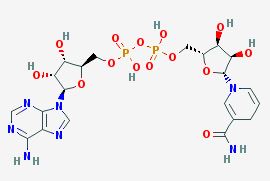
NADH is found in, and critical for the health of every cell in your body. NADH is the reduced form of NAD+(Nicotinamide Adenine Dinucleotide), making it the “active” form which can donate electrons.
NADH is the primary carrier of electrons from glucose and lactate for ATP synthesis. ATP is the cell fuel source produced within mitochondria. The power supply in each of your brain cells. So you need NADH to transfer the energy from the food you eat into a type of energy your body can use.
You get small amounts of NADH by eating meat, poultry and fish. Vegetables have very low concentrations of NADH. So vegetarians are typically low in NADH. And since NADH is very unstable, much of it is lost through cooking.
When you supplement with NADH, cerebral electrical activity increases in areas of your brain used for attention, cognition, focus, memory, concentration, and decision making.
How does NADH work in the brain?
NADH boosts brain health in several ways. But two in particular stand out.
- NADH increases the production ATP. NADH carries the electrons needed for the synthesis of ATP. Your brain cell mitochondria depend on NADH for ATP synthesis to function and stay healthy.
By providing the means for ATP synthesis, NADH is involved in cognition, focus, concentration, memory, and processing speed.[iv] And NADH plays an important role in mediating brain aging and tissue damage. Even decreasing the damage done by strokes.[v]
In one double-blind, placebo-controlled study researchers did a 3-month trial with Chronic Fatigue Syndrome patients. 86 patients were chosen to receive either 20 mg of NADH daily or a placebo for the first 2-months. Mean age of the participants was 47 years.
The study measured the intensity of fatigue, functional performance, mood state, functional impact of fatigue, quality of life, sleep quality, and exercise capacity. Each was measured prior to the study. And then at 30, 60 and 90 days of treatment.
The study found that oral administration of NADH resulted in decreased anxiety and maximum heart rate.[vi]
- NADH increases neurotransmitters. NADH is directly involved in the production of the critical neurotransmitters dopamine and norepinephrine.
Dopamine is usually made inside the neurons that use it. The amino acid tyrosine is first converted to L-DOPA through the enzyme tyrosine hydroxylase. L-DOPA is then converted to dopamine.
Research shows that tyrosine hydroxylase is the rate-limiting controller of dopamine synthesis. This is seen in Parkinson’s patients where tyrosine hydroxylase is much lower than in healthy people.
To complicate things even more, we need to understand what makes tyrosine hydroxylase work. The coenzyme that activates tyrosine hydroxylase is tetrahydrobiopterin (H4BP). And it’s NADH that activates this enzyme, and helps produce H4BP.
Researchers in Austria conducted an open label trial with 885 Parkinson’s patients. The study was conducted to try a therapy that might increase the brain’s own dopamine production instead of directly giving the patents L-DOPA.
In this study, 415 patients received intravenous (IV) NADH and 470 patients got an oral dose of NADH. Both groups showed overall good response to treatment including improvements in motor function, walking, pushing, posture and speech. They also experienced improvements in cognition and mood.
The researchers found increased dopamine metabolites in the urine of the patients. Indicating that NADH induced an increase in dopamine production. Most of the Parkinson’s patients were able to reduce and even eliminate their other Parkinson medications.[vii]
How things go bad
As we get older, NADH levels decline. And no amount of healthy eating or exercise can stop this decline.
↓ Dopamine and norepinephrine levels decline
↓ Intra-cellular genome communications break down
↓ Energy levels decline
All of these age-related changes are contributing factors to the neurodegenerative diseases of aging, including Alzheimer’s and Parkinson’s.
But even if things haven’t degenerated to such a debilitating level, NADH can help. In fact, it’s required for dopamine synthesis.
NADH benefits
Research has shown that people with low NADH levels are far more vulnerable to addiction, disease and other chronic conditions. Low NADH levels can happen at any age. Even at birth.
In our Western society, NADH is lost in cooking and food processing. And what little remains is broken down by stomach acid and degraded before it’s absorbed in your digestive tract.
When you take NADH as a supplement, your cells think oxygen levels are normal and start working as if they were younger, undamaged cells.
Research from hundreds of studies have shown that NADH will:
- Boost energy levels and stamina
- Reduce fatigue
- Reduce the possibility of age-related diseases
- Lower blood pressure
- Provide protection and energy to your brain
- Boost cerebral blood flow
How does NADH feel?
Using NADH as a nootropic can boost ATP synthesis in your brain. And increase the production of the neurotransmitters dopamine, norepinephrine and serotonin.
You should experience a boost in mental and physical energy levels, a better mood, improved cognition and alertness.
NADH even helps relieve symptoms related to jet lag. And has been shown to alleviate the symptoms of Chronic Fatigue Syndrome including less brain fog, improved mood and energy, and better cognition.
And neurohackers report more endurance during workouts and running.
NADH Clinical Research
NADH helps reduce Jet Lag
Current remedies for jet lag don’t work very well. Chronic commuters have resorted to melatonin, stimulants, sedatives and phototherapy. And all have produced dismal results in recovering from jet lag.
NASA investigated the efficacy of using NADH as a countermeasure for jet lag. NADH increases cellular production of ATP and facilitates dopamine synthesis. So the thinking was NADH could counteract the effects of jet lag on cognitive function and sleepiness.
35 healthy frequent travelers were recruited in this double-blind, placebo-controlled study. Testing was conducted on the West Coast before subjects flew overnight to the East Coast.
Subjects were given either 20 mg of sublingual NADH, or a placebo. All underwent testing to assess cognitive function, mood, and sleepiness in the morning and afternoon the day after the red-eye flight.
Jet lag resulted in sleepiness for half the participants, and a third of them experienced deterioration of cognitive function. The morning following the flight, subjects experienced lapses of attention, disruptions to working memory, divided attention and visual perceptual speed.
Those who received NADH performed significantly better on cognitive and motor tests, showed better performance on other measures, and reported less sleepiness than those who took a placebo.
NASA concluded that, “Stabilized NADH significantly reduced jet lag-induced disruptions of cognitive functioning, was easily administered, and was found to have no adverse side effects”.[viii]
NADH regenerates stem cells in the brain
Researcher Hongbo Zhang wanted to understand how the regeneration process deteriorated with age. So he teamed up with colleagues from ETH Zurich, the University of Zurich and universities in Canada and Brazil.
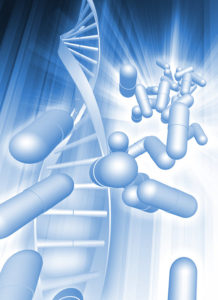 Under normal conditions, stem cells react to signals sent by your body, and regenerate damaged organs by producing new specific cells. Fatigue in stem cells is one of the main causes of poor regeneration. Resulting in degeneration in tissues, organs and the brain.
Under normal conditions, stem cells react to signals sent by your body, and regenerate damaged organs by producing new specific cells. Fatigue in stem cells is one of the main causes of poor regeneration. Resulting in degeneration in tissues, organs and the brain.
The research team set out to revitalize stem cells in the muscles of elderly mice. They gave nicotinamide riboside to 2-year-old mice (which is considered “old” for a mouse). Nicotinamide riboside is a precursor to NADH.
The results showed muscular regeneration was much better in mice that received nicotinamide riboside. They lived longer than the mice that didn’t get it.
Parallel studies have revealed a comparable effect on stem cells of the brain and skin. This work on the aging process has potential for treating diseases that can affect, and be fatal even in young people, with illnesses like muscular dystrophy.
No negative side effects were observed in any of the studies following use of nicotinamide riboside, or stabilized NADH. It appears to boost the functioning of all cells. Including cells that have been damaged.[ix]
NADH decreases anxiety
Studies show that NADH may be low in those suffering chronic fatigue syndrome (CFS). So researchers in Spain set out to evaluate the efficacy of supplementing NADH in those with CFS.
The research team recruited 86 CFS patients with a mean age of 47 years to take part in a 3-month double-blind, placebo-controlled trial. The patients were given 20 mg of NADH or a placebo for 2 months.
The team found that those using NADH experienced a significant decrease in anxiety symptoms. And maximum heart rate dropped.[x]
NADH reduces symptoms of Chronic Fatigue
Chronic Fatigue Syndrome (CFS) has baffled researchers and the medical community for years. Its cause is unknown, and it’s associated with a myriad of symptoms.
But the main common denominator in all Chronic Fatigue cases is severe fatigue. And no therapeutic regimen has proven effective for this condition.
In this study, 31 patients fulfilling the criteria for CFS were selected to participate. They were given NADH or other nutritional supplements for 24 months.
The 12 patients who received NADH had a dramatic and statistically significant reduction of chronic fatigue symptoms.[xi]
NADH Recommended Dosage
NADH is a coenzyme, antioxidant form of Vitamin B3 (niacin). It’s a naturally occurring enzyme found in all living cells. And necessary for cellular ATP synthesis and energy production.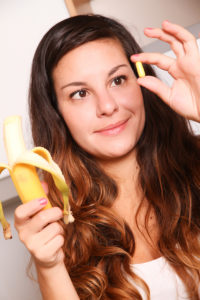
NADH is available in tablet form as 5, 10 and 20 mg tablets. It’s faster-acting if you can find sublingual tablets.
If you’re looking to boost dopamine, stack your NADH with L-Tyrosine. Because NADH converts tyrosine to dopamine.
NADH Side Effects
Your body naturally produces NADH. So it’s non-toxic and very well tolerated. NADH should not produce side effects.
Types of NADH to buy
NADH is highly unstable and for it to remain effective needs to be in a stabilized form.
Most neurohackers recommend the patented, stabilized form of NADH that’s made by a German company called ENADA. A couple of major supplement manufacturers license the ENADA brand of NADH. Check the label.
Another great option is Pure NADH which is 100 % vegan-friendly, lactose-free, Halal certified, manufactured under GMP, ISO 22000, HACCP standards, and 3rd party tested.
I use and recommend: Click for Pure NADH
Nootropics Expert Recommendation
NADH 10 mg per pay
 I recommend using NADH as a nootropic supplement.
I recommend using NADH as a nootropic supplement.
Your body does make some NADH on its own. And from eating meat, poultry and fish. But studies have shown we don’t get an adequate supply of NADH from food sources because most of it is lost in cooking.
NADH is particularly helpful for vegetarians because very little NADH is available from vegetables.
NADH is especially helpful for those suffering Chronic Fatigue Syndrome.
We suggest starting with a dose of 10 mg daily. And NADH is a great compliment to a stack with any nootropic. Do your best to find a stabilized form of NADH like the patented ENADA.
For a more effective dopamine boost, stack your NADH with L-Tyrosine. NADH converts tyrosine to dopamine.
You need to provide the mitochondria in your brain with the nutrients required to make ATP which is your main source of cellular energy. Or neurons start to break down from the inside. NADH carries the electrons needed for the synthesis of ATP. Signs that your lacking adequate NADH is brain fog, slow thinking, fatigue and low endurance.
Some clinics in the USA and other countries are using NADH or NAD+ therapy as a treatment for addiction, anxiety, depression, chronic stress and post-traumatic stress disorder (PTSD).
Intravenous (IV) NADH has been used effectively since the 1960’s for detoxing patients from alcohol, opiates, tranquilizers and stimulants.[xii]
I use and recommend: Click for Pure NADH

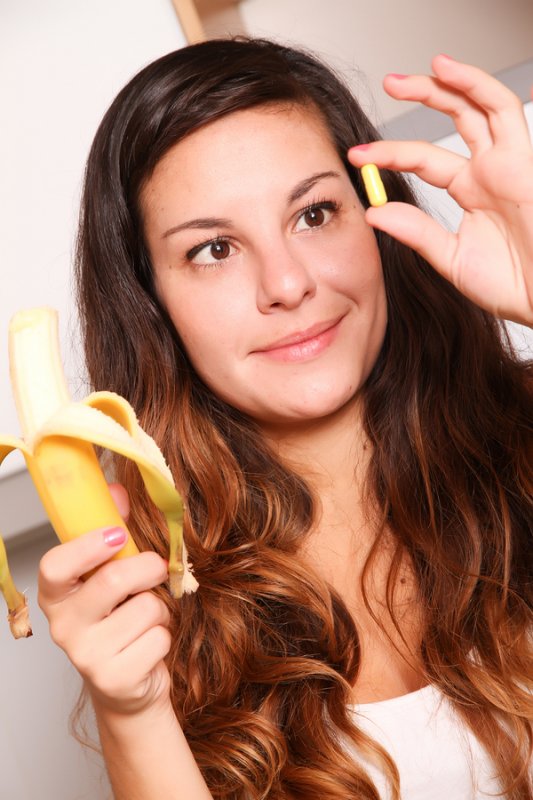
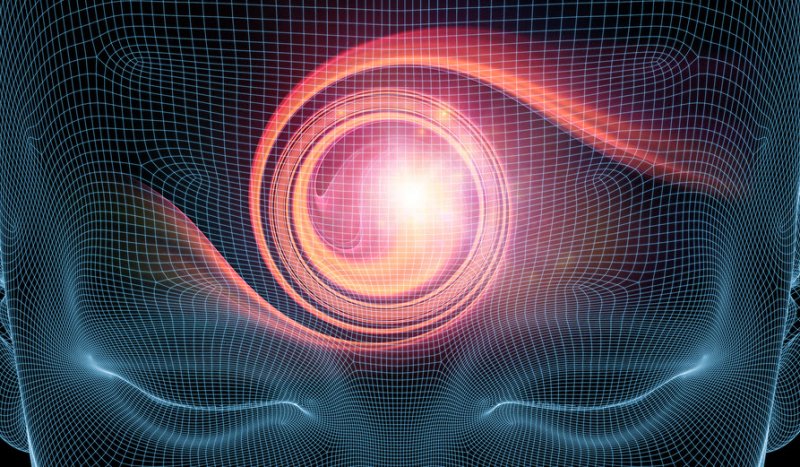






Join The Discussion - 110 comments
Jenn
April 26, 2019
Hi David – Did you find that NADH helped with focus? I have Inattentive ADHD and am trying different supplements. I tried Adderall for a bit, which helped with motivation but not focus, but I stopped taking it when it started giving me terrible headaches. Next I tried l-tyrosine, which gave me a lot of energy, especially when combined with caffeine, but I built up a tolerance to it pretty quickly and the effects wore off. I am really looking for something that will help me sit at my computer and focus – though I’m starting to feel like that’s a unicorn.
David Tomen
April 27, 2019
Jenn, the protocol outlined in the following post is designed specifically to help the ADHD brain focus: https://nootropicsexpert.com/best-nootropics-for-adhd-add/
Bianca Fleming
April 25, 2019
I’ve just started taking the EDNA NADH but am also taking an SSRI.
I have come across no contraindications/interations on the web, but by readibg that it can increase your serotonin has be worried about serotonin syndrome. What are you thoughts?
David Tomen
April 27, 2019
Bianca, NADH is involved in the synthesis of major neurotransmitters like serotonin. But it doesn’t directly boost serotonin like L-Tryptophan or St. John’s wort does. So there is no danger of Serotonin Syndrome if using it with a SSRI.
Denis
March 22, 2019
Hi David,
Can you please tell me if NADH can be used just twice per week as a mood booster or it needs to be taken more frequently to have an effect? Would it do anything for a healthy 39 year old? My concern with some of this stuff is that it wont do much for younger and healthy individuals, am I right or wrong, because Enada NADH is very expensive, I don’t want to be taking it if the benefits wont be on par with the hefty price.
Also, can you please tell me if DL Phenylalanine and ALCAR would be good mood boosters for someone with a bit of an anxiety problem like me. I also plan to use L-Theanine and Ashwaganda. I would use these 4 days on, 3 day off.
Thank you.
David Tomen
March 23, 2019
Denis, unless your body has a problem synthesizing NADH it may not be your best option for taming anxiety.
Would you please see my post on anxiety here: https://nootropicsexpert.com/best-nootropics-for-social-anxiety/. Each of the nootropics you mentioned here may help. But it depends on the root cause of your anxiety. Otherwise, we’re guessing and trial and error to find something that works can get expensive and frustrating.
Read that post and see if anything resonates with you. You may be better off trying things like Lemon Balm, L-Theanine, Mucuna pruriens, ALCAR, etc.
Maxwell Austin van Lack
March 22, 2019
David – Thanks for the link to the study. Although it focused primarily on the newer NMN variant it did compare NMN to NR to show how each has its pros and cons. Unfortunately, NMN has yet to emerge from the “rat labs” so its still pretty far behind NR in terms of human trials, which I guess is why the FDA has already determined NR to be “safe”. Which is why I was hoping to get your opinion on how NR compares to niacin.
I first became acquainted with niacin while living in Hollywood during the LSD and speed addiction crazed 1960’s. A friend of mine ran a free clinic back then and used niacin as a key component of his detox regimen for any strung out kid who managed to find their way to his front door.
For now I plan to follow your advice and include niacin in my stack and wait for the literature on NR to mature. In addition, I recently started drinking one liter per day of bottled FIJI water based on reports that the amount of silica it contains is proving effective in bonding with, and flushing out, aluminum both from brain and body tissues. A new twist on chelation, I guess.
I even convinced an 89 year old friend of mine, who has been experiencing cognitive decline in recent years, to join me in my FIJI program. I’m a bit more cautious when it comes to recommending niacin to him given that he had heart valve replacement surgery 5 years ago. But I may bring it up with his doctor just to see what his medical reaction is. Any thoughts?
David Tomen
March 23, 2019
Maxwell, definitely check with your friends doc before doing something as powerful as niacin. At some stage I’ll need to do a separate review for NR. My brother-in-law is partners in a company that makes a NR supplement. So looks like I’m being pushed from all sides to write something. 🙂
Please try using the keyword “chelate” in the search field top right of Nootropics Expert and see what else turns up. I seem to recall several natural nootropics that work well as heavy metal chelators.
Maxwell Austin van Lack
March 21, 2019
David – You have spoken at length on the benefits of Niacin, but nothing by way of comparison regarding Nicotinamide Riboside (NR), which many are advocating as being superior. What is your view on this?
David Tomen
March 21, 2019
Maxwell, it’s because this is an extremely complex area of neuroscience research. With the latest study only published in Jan. 2019.
Nicotinamide riboside is a pyridine-nucleoside form of vitamin B3 (niacin) that functions as a precursor to NAD+ and NADH.
The study I’m referring above is this one: https://www.ncbi.nlm.nih.gov/pmc/articles/PMC6359187/. Once I’m able to wrap my brain around how this all works, it may warrant a separate review for Nicotinamide riboside.
But anyone who claims that Nicotinamide riboside is superior clearly doesn’t understand the complexity of Niacin and all its derivatives. For some brain health issues it may be. But each derivative has its function in how so many things work including neurotransmitters all the way down to inside of mitochondria.
Scott Charles
September 17, 2018
Is it worth the extra cost for ENADA NADH. I have been taking 5mg per day ENADA (source naturals) for over 10 years. Is costs almost double, is there data about ENADA effects vs the “non” enada versions?
David Tomen
September 19, 2018
Scott, NADH is highly unstable and cannot be put into a capsule or a tablet with the expectation it’ll do anything once it makes it into and past your digestive system. ENADA NADH is still the only stabilized form of NADH available anywhere. So if you are going to supplement with NADH, the ENADA form is the only one worth using.
tom
June 13, 2018
Hi David. Can NADH and Deprenyl be taken together?
David Tomen
June 13, 2018
Tom, I have not seen any studies contraindicating NADH with Deprenyl. Both increase dopamine so I imagine a low dose (i.e. 5 mg) should not be a problem. Higher dosages may cause issues. If you try them together and find you feel over-stimulated then you’ll know for sure.
Sheila Van Houten
August 23, 2017
Thank you for this excellent report!
How long before NADH kicks in?
Thank you!
David Tomen
August 23, 2017
Sheila, it depends on whether you use a sublingual form or NADH needs to be digested. Under your tongue and you should experience the effects right away. Swallow a tablet or capsule and it could take up to an hour.